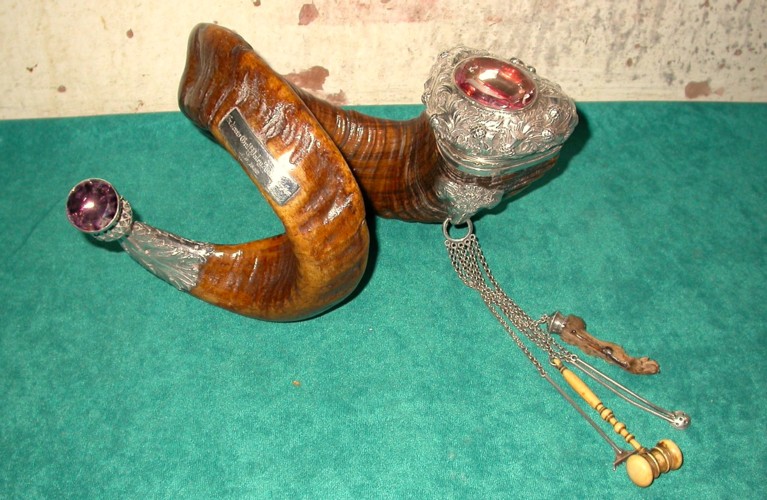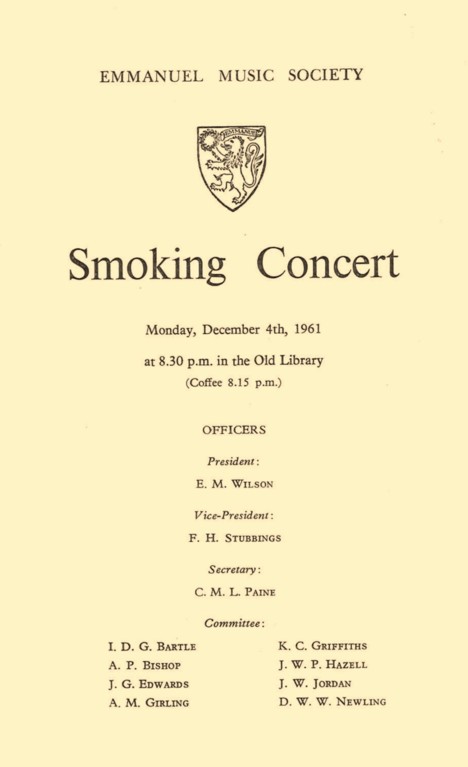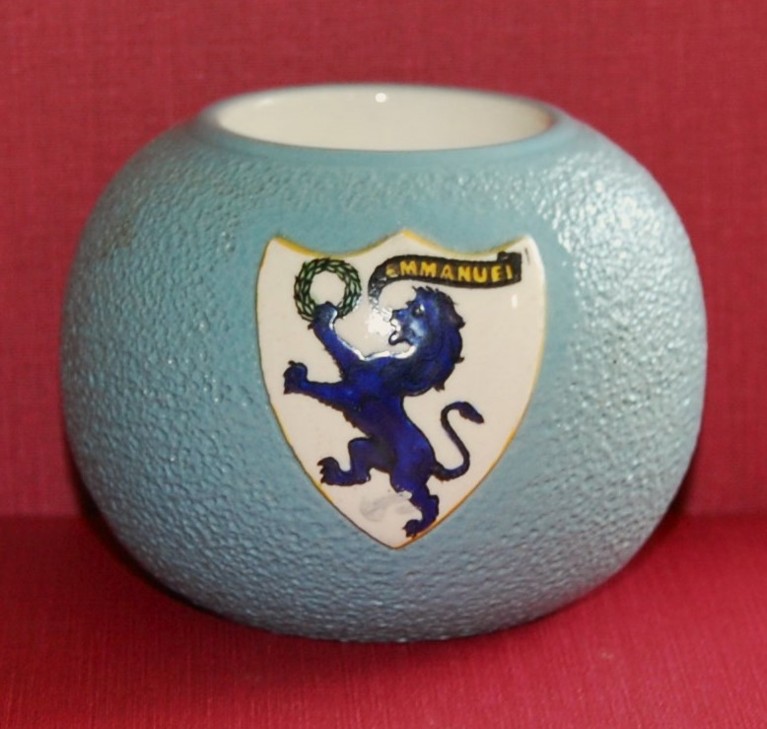Blog
4 October 2023

Ram’s horn snuff mull, given to Emmanuel in 1856
Emmanuel has for some time been officially a ‘smoke-free site’. Anyone wishing to enjoy a crafty ciggie is therefore obliged to skulk outside the college gates. Yet for nearly four centuries, smoking within the precinct was not just tolerated, but practically encouraged.
An early Emmanuel enthusiast for the weed was Elias Travers. Appointed Fellow in 1609, he had tutorial responsibility for a student named Thomas Knyvett, who was admitted in 1611, aged 16. When Thomas’s grandmother received a tip-off that her pet tutor indulged in the vice of pipe-smoking, she immediately threatened to send her grandson to another college. Travers did not want to lose Lady Knyvett’s generous, if demanding, patronage, so he gritted his teeth and replied: ‘if the Tabacco I have sometimes taken be a just grievance to any, I desire them to know that if the forbearance or utter avoidance of it will give them content, I shall quickly quite ridd myself of it…’. Whether or not Travers genuinely intended to abjure the pernicious habit, his renunciation was enough to placate Lady Knyvett, who let Thomas remain at Emmanuel.
It was not long before smoking became an integral part of Emmanuel’s society. From 1710, and probably earlier, tobacco was supplied gratis to the fellowship on high days and holidays, as well as at the annual audit. College orders of the 1720s required the steward and dean to provide the Parlour with ten quarts of red wine and half a pound of tobacco on the day of their election. This obligation proved predictably unpopular, and the orders were quashed in 1747. Certain standards were maintained: partaking of snuff during dinner in Hall, for example, was forbidden by a ruling of 1782, any Fellows transgressing being fined one bottle of wine ‘for every pinch’.
The Parlour wager books record several bets involving tobacco, including whether its smoke could ‘take fire’, the likely interval between using snuff and sneezing, the probability of an ounce of tobacco filling five pipes, and how many (if any) bishops smoked. A truly bizarre wager between Henry Homer and William Meeke in 1783, was whether ‘Homer’s Mare smoakes a pipe backwards better than Meeke forwards’.
A variety of smoking accoutrements were procured for Parlour use, including tobacco boxes, spitting trays, and, in 1766, two gross of ‘Glaz’d Tobacco pipes’. A ‘Polished Tobacco pot & rais’d cover’, engraved with the college arms, was commissioned in 1784 - but mysteriously vanished from the Parlour cupboard in 1800. Later acquisitions included a ‘handsome’ gift in 1798 of a ‘canister of prime snuff’, a bejewelled ram’s horn snuff-mull given in 1856 by William Paley Anderson (one of the younger Fellows), and, in the last century, silver cigarette boxes, ashtrays and matchbox cases, all of which are now rapidly acquiring curio status.

Smoking Concert programme, 1961

Matchpot with Emma crest
Undergraduates seem always to have been at liberty to smoke, hence the need for the University authorities to threaten students with expulsion if they did so anywhere near the tobacco-hating King James I and VI, during his December 1624 visit to Cambridge. By the nineteenth century Cambridge shopkeepers were supplying a plethora of mass-produced tobacco jars, ashtrays, cigarette cases and Carlton Ware matchpots, which students could customize by having their college’s coat of arms added. A popular form of undergraduate entertainment was the so-called ‘Smoking Concert’, traditionally confined to male audiences. Emmanuel’s Musical Society hosted many such events, but the last of these fuggy recitals was held on 12 March 1962. Just a few days earlier, the Royal College of Physicians had published its groundbreaking report on the health risks of smoking. Change was in the air…
Amanda Goode, College Archivist
